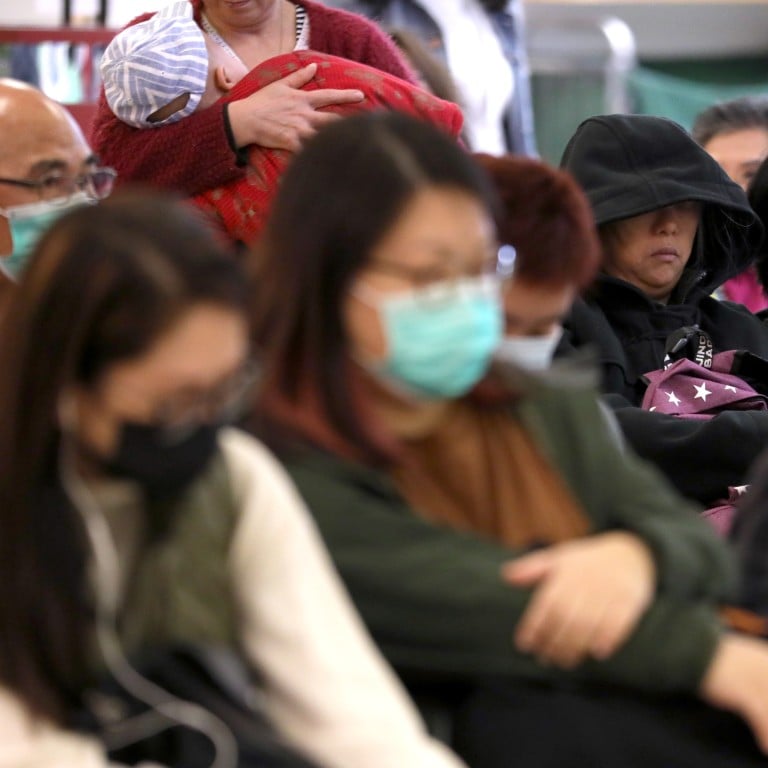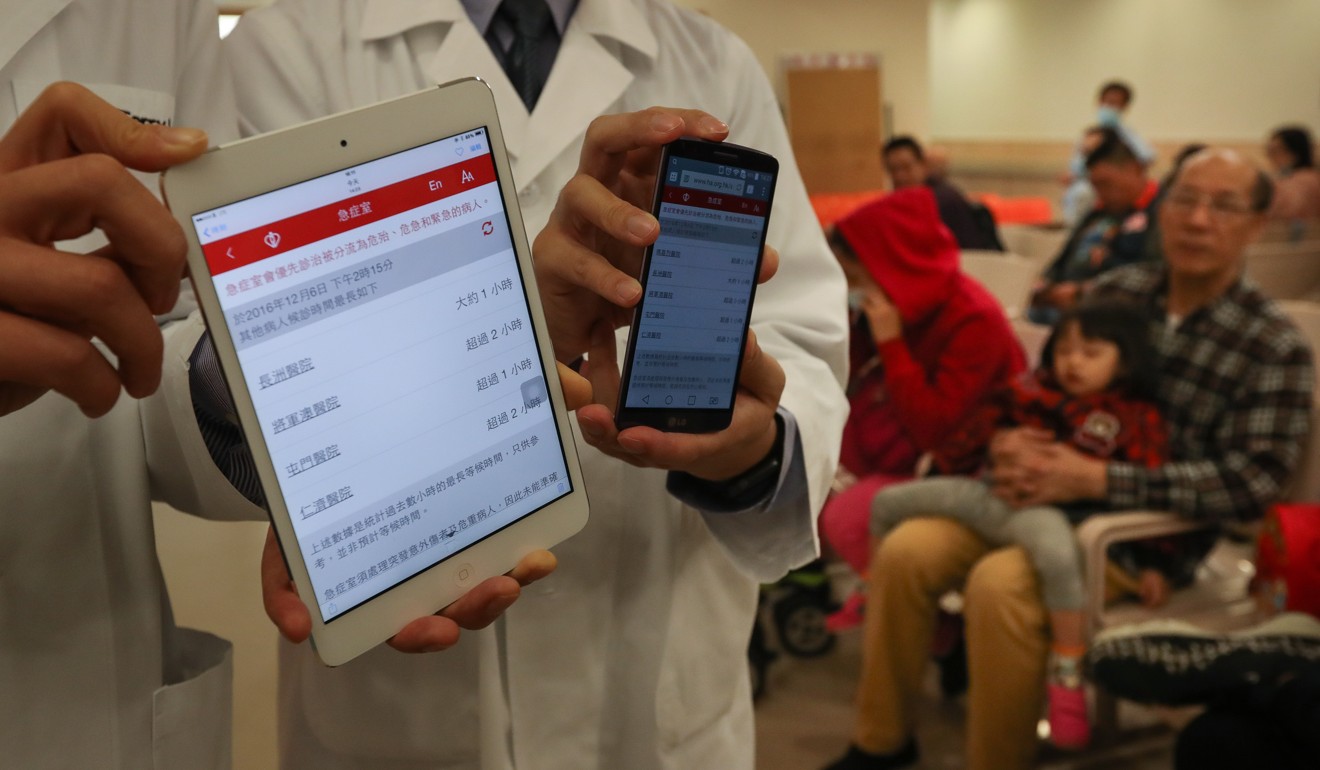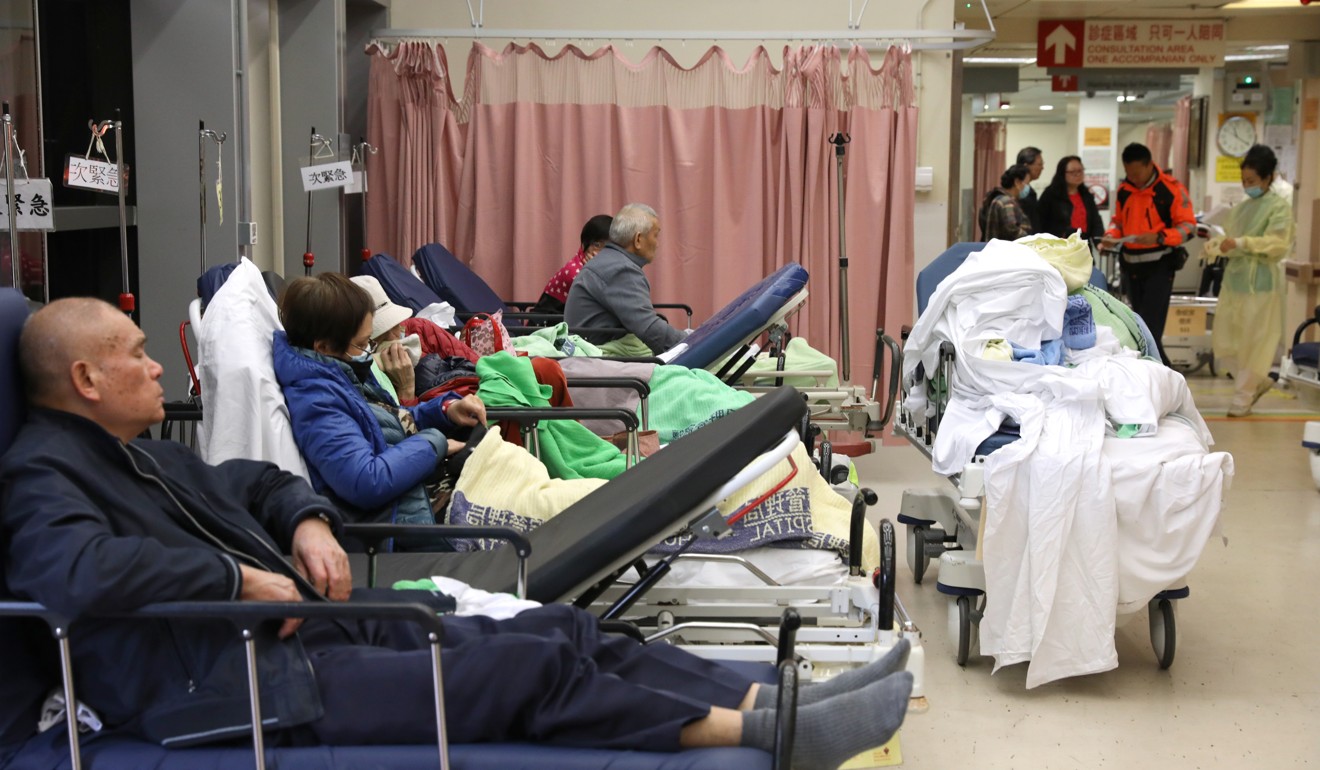
Non-urgent patients wait up to 8 hours at Hong Kong’s public hospitals amid flu surge – and things unlikely to get better before Lunar New Year
- Overall occupancy rate at public hospitals reaches 109 per cent, meaning temporary beds have to be used in corridors
- Group calls for simple ‘one-stop shop’ app to save patients time as existing versions are too confusing and inconvenient
Overcrowded public hospital wards are bracing for an even heavier winter flu load ahead of the Lunar New Year holiday next month, with non-urgent patients having to wait up to eight hours to see a doctor.
The health authority last week announced the city had entered the winter peak season for influenza and warned virus activity could further increase in coming weeks. So far the surge has claimed eight lives.
The Department of Health said the peak flu season normally lasted for at least a month, meaning the problem of packed wards could worsen ahead of the holiday, during which many doctors usually took a break.

The overall occupancy rate at public hospitals was 109 per cent on Saturday, which meant temporary beds had to be laid along corridors or in between fixed ones. Tseung Kwan O Hospital had the highest occupancy, at 128 per cent, followed by Queen Elizabeth Hospital in Yau Ma Tei with 121 per cent.
There were waiting times of up to eight hours at all accident and emergency units, according to Hospital Authority data.
That came as a survey of 356 residents by the Business and Professionals Alliance found that more than a third were unsatisfied about perennially long waiting times at public hospitals and over half had waited at least two hours at casualty units.
Flu jabs call as winter peak season arrives week earlier than last year
“The authority should seriously review the health care system, and assess whether they can cope with the shortage in resources and manpower. This is the root of the problem,” alliance community organiser Li Sze-man said.
Also, 66 per cent reported having to wait an extra 30 minutes to pick up medication from the pharmacy while 20 per cent waited two hours or more for prescriptions.
The group also found there were at least 13 different authority apps, which they said was too confusing and inconvenient for patients, especially the elderly, and suggested consolidating them into a “one-stop shop”.

HA Touch, the main app, provides notifications on services, A&E waiting times and new case bookings for specialist outpatient services. The TouchMed app shows the medicine collection status at different pharmacies. Both have only been downloaded about 50,000 times.
There were separate apps offering advice on hip fractures and diabetes, and for booking clinic appointments. Some public hospitals had their own apps. Prince of Wales Hospital, for example, had an app for A&E waiting times.
More people getting jabs ahead of winter flu peak season
“We hope the government can continue promoting the Hospital Authority’s website and apps so patients can obtain more information before making trips to hospital and having to wander around aimlessly wasting their time,” Li said.
Although 86 per cent of survey respondents supported the use of mobile apps to streamline the triage system and provide real-time updates on waiting times, more than 90 per cent were unaware that the functions already existed on the authority’s website or apps.
“They should enhance their apps, promote them more and ensure the public know they can obtain the latest information,” Li said.

Dr Jeffrey Pong Chiu-fai, convenor of the group’s health and hygiene committee, said the HA Touch app was “not very effective or efficient” in helping a patient to see a doctor the fastest way.
“We have apps but how can we use them to complement the service better?” he said. “The long-run goal is how to use smart, convenient and efficient means to seek medical help. If they have an app but no one uses it, then more people will just walk in [to the A&E] room and wait.”
He said it should be relatively easy to consolidate and streamline apps given that almost 80 per cent of hospital admissions take place within the same public system.
75,000 doses of flu vaccine from batch with impurities used in Hong Kong
In response, an authority spokesman said the Hospital Authority was working on a consolidated mobile application platform that would be available later this year.
A&E departments had a primary role of taking care of patients requiring urgent care, he said. Those who were critically ill or seriously injured would be given priority in accordance with established triage guidelines. He encouraged patients with minor ailments to seek alternative health care services, especially during periods of high demand.
The authority manages 43 public hospitals and institutions, 49 specialist outpatient clinics and 73 general outpatient clinics.
Its latest figures, released last month, showed that average waiting times had lengthened from 24 minutes in 2015 to 26 minutes last year, despite an increase in standard emergency charges from HK$100 to HK$180 in 2017, as more elderly people used emergency ward services.
About 2 million people visited A&E departments between July 2017 and June 2018, down 4.4 per cent year on year. About 61 per cent were non-urgent cases, a drop from 63 per cent the previous year.


